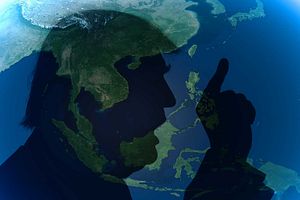Assuming he follows through on his travel plans, U.S. President Donald Trump’s upcoming visits to Vietnam, the Philippines, and possibly China will shine a potentially unforgiving spotlight on his administration’s approach toward Asia and appetite for a continued regional leadership role. According to Vice President Mike Pence back in April, Trump is scheduled to attend three multilateral summits in November. In order, these are the Asia-Pacific Economic Cooperation (APEC) Leaders’ Summit in Vietnam November 6-11; the U.S.-Association of Southeast Asian Nations (ASEAN) Summit in the Philippines November 10-14; and the East Asia Summit (EAS) in the Philippines November 13-14.
But Trump comes to Asia amid a sense of profound ambivalence in the region. Although the administration’s priorities at the outset and at these meetings are quite clear, there are also lingering questions about its approach and the role of the United States more generally in the region.
Clear Priorities
The Trump administration’s approach to the region so far suggest that North Korea, terrorism, and trade issues are likely to feature as the priority policy areas for the United States. North Korea’s missile and nuclear programs were the first issues to land on Trump’s desk as president, featured in President Barack Obama’s handover briefing. Trump has maintained a consistent focus on North Korea since becoming president, if punctuated by inflammatory remarks. Most recently, he addressed the UN General Assembly on September 20, promising to “totally destroy” North Korea if it attacked the United States or its allies.
Turning to terrorism, combating “radical Islamic terror” was a major issue in Trump’s campaign, and in his inauguration speech. The Middle East will remain center-stage in the fight against the Islamic State (ISIS). But as its battlefield defeat looms closer in Iraq and Syria, the opening of a potential new ISIS “front” in Southeast Asia is a mounting concern for the United States and regional governments alike, and will undoubtedly be highlighted at the U.S.-ASEAN and East Asia summits.
On trade, Trump has not carried out his reported intention to withdraw from the U.S.-South Korea (KORUS) free trade agreement. Trump’s hostile attitude toward free trade agreements is deeply rooted and well known. Washington’s battered reputation continues to suffer from Trump’s rejection of the Trans-Pacific Partnership (TPP). It is unlikely new trade deals will be made or amended on his trip; if they do not help America “win,” Trump will not publicize them. Conversely, the security imperative for cooperation on North Korea means that he will not risk disaffecting regional partners by pulling out of existing agreements.
Lingering Questions
A little over eight months into the Trump presidency, things could be worse for the United States in Asia. America’s Asian alliance network remains fundamentally intact and Washington has managed to mobilize a significant amount of international support in its campaign to isolate North Korea. But there are also a number of glaring shortcomings and contradictions to the Trump administration’s Asia policy. Some failings are simply attributable to inexperience. The new and internally volatile administration is operating without the support of a sizable caucus of the Republican foreign and security policy establishment.

































